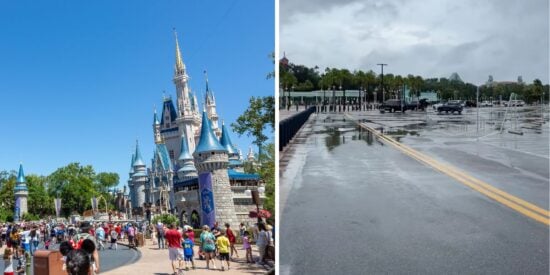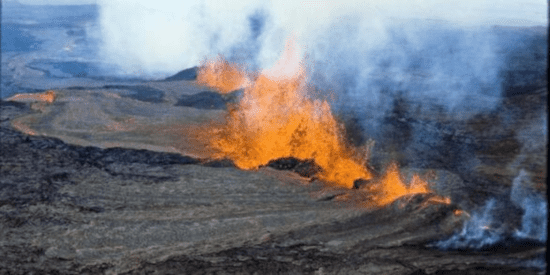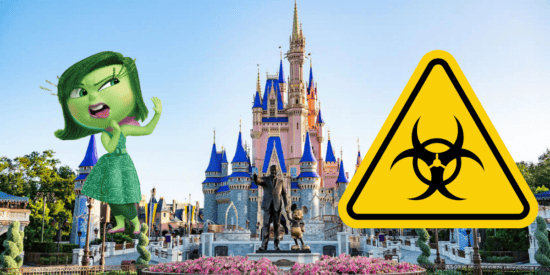Because of the air quality at Disney Parks in certain locations, guests face extreme risks to experience the magic.

Fire, Hurricane, Volcano, Pollution
Almost like the iconic four horsemen, there is growing international concern about the various weather events taking hold. According to a CNN report, the air quality is a global concern. This is particularly relevant to those with existing vulnerabilities like allergies or asthma.

Wildfires Impacting Disney Air Quality
It cites wildfires in Canada’s north as an air pollutant to other spots, as far off as the East Coast in New York. In Southern California, wildfires are a regular phenomenon.
The Anaheim Disneyland Resort has passed it before, but the current air quality index is concerning. Walt Disney guests in California face some severe air pollution issues.

Hurricane Idalia Impacting Florida Walt Disney World
Fire isn’t the only thing to change the nature of the air that we breathe. As Hurricane Idalia sweeps through Florida, it brings with it a host of risks. From picking up parasites and bacteria in debris to simple allergens, the damage can last long after Walt Disney World Resort resumes normal operations.

Volcano Impacting Disney in Hawaii
The Maui wildfires and the overall shift in the air due to volcanic activities make it tricky for those wanting a Walt Disney World getaway in Polynesia. The health effects of volcanic activity mean that the wildfire smoke isn’t the only problem.
Volcanic ash contains many toxic chemicals that impact the air quality index. And, while Hawaii is often a first thought for volcanoes, they actually lie all around the world.

Pollution Impacting Walt Disney Company
The CNN article detailed that the impacts of smoke in Hong Kong and other areas are extreme. But it also highlighted the different issues impacting air quality: pollution. In specific, it’s a reference to “tiny pollutants.” These are the small bits that are in the parts per billion (ppb). PM2.5, the world’s standard way of measuring air pollution, is directly impacted by smog.
Related: Disney World Changes Rules Yet Keeps Toxic Chemicals on the Menu
It cites vehicle emissions, coal-fired plants, and the burning of agricultural fields. Because of this steady yet pernicious issue, it can be easy to lose sight of the problem. However, the “tiny pollutant” is hazardous. When inhaled, it can wriggle into the bloodstream and lung tissue. This connects to asthma and heart disease.

It’s a Small World for the Walt Disney Company
In the era of globalization, no Disneyland park is unaffected. Our atmosphere is a fixed system, and that means air quality matters. Disney has taken steps like getting rid of fireworks in favor of light shows. Other companies have stepped up, particularly in Beijing.
Yet without ongoing efforts and some serious Walt Disney Imagineering, poor air quality can become a significant problem for sensitive groups. Disney guests can check the air quality index to promote safety. It’s an effective tool everywhere in Central Florida, the United States, Hong Kong, or Shanghai.
While the air quality isn’t enough to stop many, tracking it reveals concerning phenomena across the globe. As a company with an international presence, air quality impacts the Walt Disney World enterprise more significantly than most.
What do you think about air quality at your local Disney Park? Share in the comments below.
